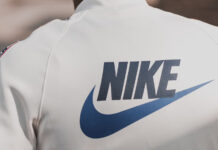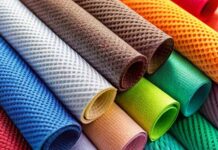As the fashion industry continues to evolve, the questions surrounding sustainability, consumer behavior, and market dynamics are pivotal in shaping the future of fashion. The phrase “quality is king” resonates strongly in a world increasingly fraught with environmental concerns and shifting consumer preferences. In 2025 and beyond, the argument for prioritizing quality fashion is compelling. This article explores the rationale and provides examples illustrating why quality fashion will reign supreme in the coming years.
The Shift Towards Sustainability
One of the most significant trends influencing the fashion industry today is the growing emphasis on sustainability. As consumers become more aware of the environmental impact of fast fashion, there is a pronounced shift towards sustainable practices. According to a report by McKinsey & Company, 67% of consumers consider the use of sustainable materials an important factor in their purchasing decisions. This trend reflects a broader awareness of climate change and ethical consumption, driving consumers to seek out high-quality, sustainable alternatives.
For instance, brands like Stella McCartney have set the standard for sustainable luxury fashion. By utilizing eco-friendly materials, reducing waste, and promoting transparency, Stella McCartney has created a model that emphasizes the importance of quality in fashion. The brand’s commitment to sustainability resonates with consumers who prioritize environmental responsibility, reinforcing the idea that quality fashion is synonymous with ethical practices.
Longevity Over Fast Fashion
The fast fashion model, characterized by rapid production cycles and low prices, is increasingly being scrutinized. The environmental and social implications of this model have prompted consumers to rethink their purchasing habits. Quality fashion, which focuses on durability and timelessness, offers a viable alternative. Investing in well-made garments means consumers can enjoy pieces that last, reducing the frequency of repurchases and encouraging a more sustainable approach to fashion.
For example, brands like Everlane focus on producing high-quality basics that are designed to last. By emphasizing transparency in their supply chain and production processes, Everlane has cultivated a loyal customer base that values quality over quantity. The company’s commitment to producing timeless essentials allows consumers to build a wardrobe that stands the test of time, aligning with the principles of sustainable fashion.
The Rise of Conscious Consumerism
In recent years, the concept of conscious consumerism has gained traction. Individuals are increasingly interested in the story behind the products they purchase. This shift has led to a demand for brands that emphasize craftsmanship, heritage, and quality materials. Consumers are willing to pay a premium for products that reflect their values and meet their expectations for quality.
Brands such as Rothy’s exemplify this shift. Known for their stylish and sustainable footwear made from recycled plastic water bottles, Rothy’s not only highlights the importance of quality but also appeals to consumers’ desire for eco-friendly options. By combining quality craftsmanship with a commitment to sustainability, Rothy’s has successfully positioned itself in a competitive market, indicating a strong future for quality-focused brands.
Economic Resilience and Brand Loyalty
Investing in quality fashion can also lead to economic resilience for brands. In times of economic uncertainty, consumers tend to prioritize quality over quantity. High-quality items often translate to longer-lasting wear, making them a better value in the long run. This, in turn, fosters brand loyalty as consumers become more discerning about their purchasing decisions.
Take sportswear giant Nike as an example. The brand has successfully integrated high-quality materials and innovative technologies into its products, appealing to athletes and casual consumers alike. By consistently delivering quality and performance, Nike has established a loyal customer base willing to invest in their products. As consumers increasingly prioritize quality over price, brands like Nike are well-positioned to thrive in the evolving fashion landscape.
The Role of Technology in Quality Fashion
As we move into the future, technology will play a crucial role in enhancing the quality of fashion. Innovations in textile production, sustainable materials, and supply chain transparency are paving the way for a new era of quality fashion. The introduction of advanced manufacturing techniques, such as 3D knitting and digital printing, allows brands to produce garments that minimize waste while maintaining high standards of quality.
Moreover, technology can enhance consumer engagement through personalized shopping experiences. Brands that utilize data analytics and artificial intelligence to understand consumer preferences can create tailored collections that resonate with their target audience. This focus on quality and personalization will further solidify the importance of quality fashion in the coming years.
Conclusion: Quality Fashion is King
In conclusion, the evidence supporting the notion that quality fashion will reign supreme in 2025 and beyond is compelling. The ongoing shift towards sustainability, the rejection of fast fashion, the rise of conscious consumerism, economic resilience, and technological advancements all point to a future where quality is paramount.
As consumers become more discerning, it is imperative for brands to prioritize quality over quantity. In a world where the environmental impact of fashion is under scrutiny, those that embrace quality and sustainability will not only survive but thrive. The future of fashion will be defined by a commitment to excellence, craftsmanship, and ethical practices — making quality fashion the undisputed king for years to come.






























